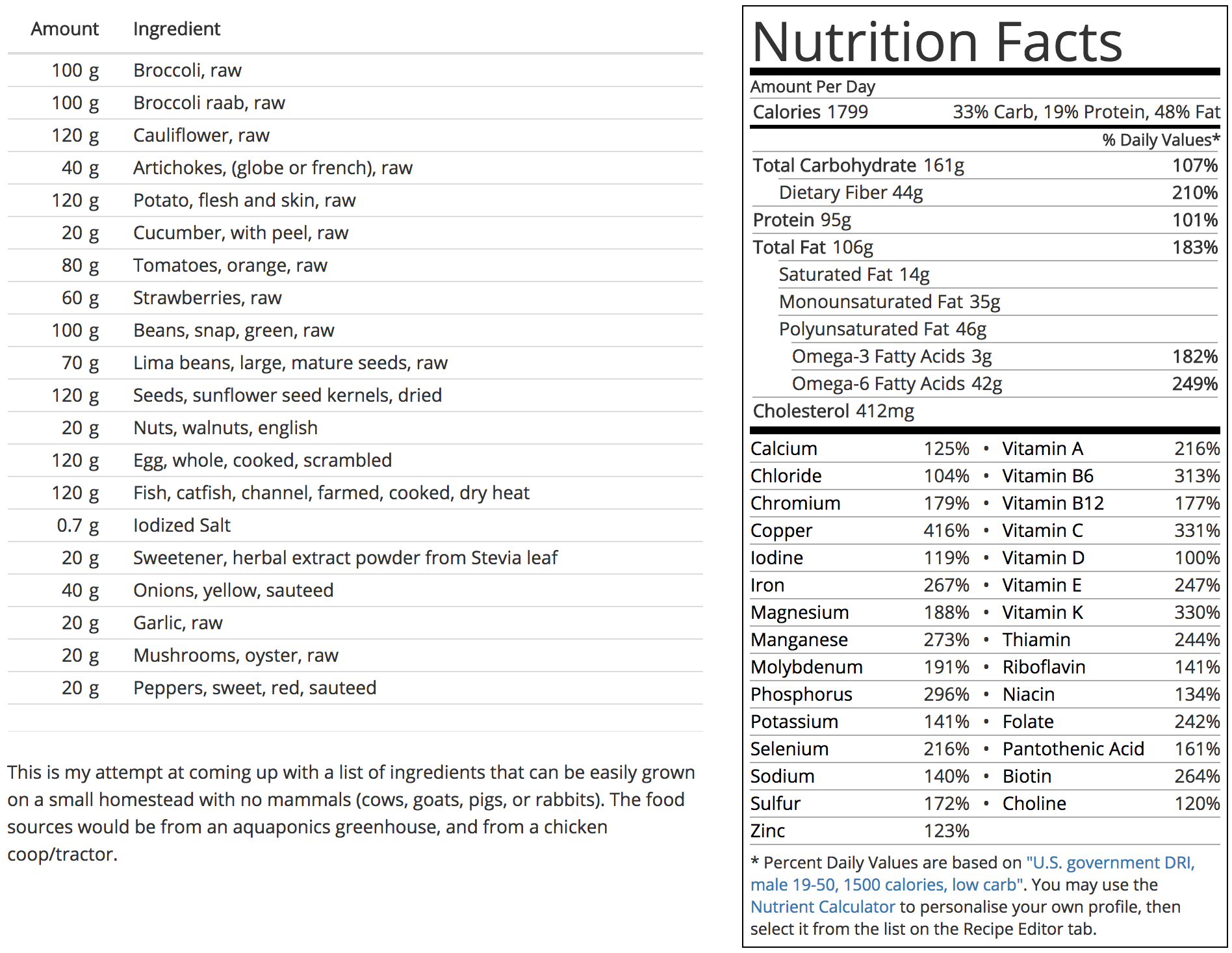The Motivation and Requirements
I’ve often thought about what a minimal list of foods that would offer complete nutrition would look like. After all, if my goal is to grow a majority of the food at home, it’s worthwhile knowing what the goal might look like, in its minimal form.
A few months ago, I finally completed such a list, thanks to an online macro- and micro-nutrient calculator available at Complete Foods (formerly known as DIY Soylent).
I avoided “cheating”: I did not include a multivitamin on the daily list. I further limited myself to foods that can be grown on a no-mammal homestead: no cows, pigs, goats, rabbits, etc. The food would come from a food forest, aquaponic garden, and a chicken coop (or chicken tractor). My reasoning was I wanted to be able to keep my land use minimal, and stick with what I know: I have experience with aquaponics, and I would like to keep chickens (currently, my town does not allow chickens on less than two acres of land).
Here is the minimal list (or as minimal as I was able to make it)
Minimal Food List and Nutrition Facts
I also added a few foods that I had already grown before and knew I could (and would want to) grow again, and came up with a non-minimal list:
Assumptions made and Lessons Learned
There were many interesting assumptions I had to make (and realizations that occurred). The first thing I had to decide on was what nutrient profile I wanted to use. After thinking about it, I went for the U.S. government Daily Recommended Intake for a male between 19–50 years old, 1500 calories daily, low carb profile. I reasoned that if you had to know the minimal food that would offer complete nutrition, you probably would be eating more than the minimum.
Another interesting point: I had a hard time coming up with non-dairy sources of calcium. Broccoli raab (not actually closely related to broccoli) came to my rescue. I have never tried growing broccoli raab, or preparing it in a dish, so that is something I definitely want to experiment with.
After thinking about the sunflower seed requirement, I looked up ways to make sunflower oil, and sunflower flour (or sun-flour) at home. The methods are very similar; I would also like to experiment with making both from one batch of seeds. I also found a sunflower “cheese” you can make that I would like to try, as well.
Finally, I plan on making a few recipes from the above, and eating them. I’ll report back when I do.
Resources
Minimal List: https://www.completefoods.co/diy/recipes/nomammal-homestead-minimal
Typical List: https://www.completefoods.co/diy/recipes/nomammal-homestead
Want to get blog posts such as this one and more emailed to you? Sign up for the AutoMicroFarm mailing list and get the Garden Planning Spreadsheet.

